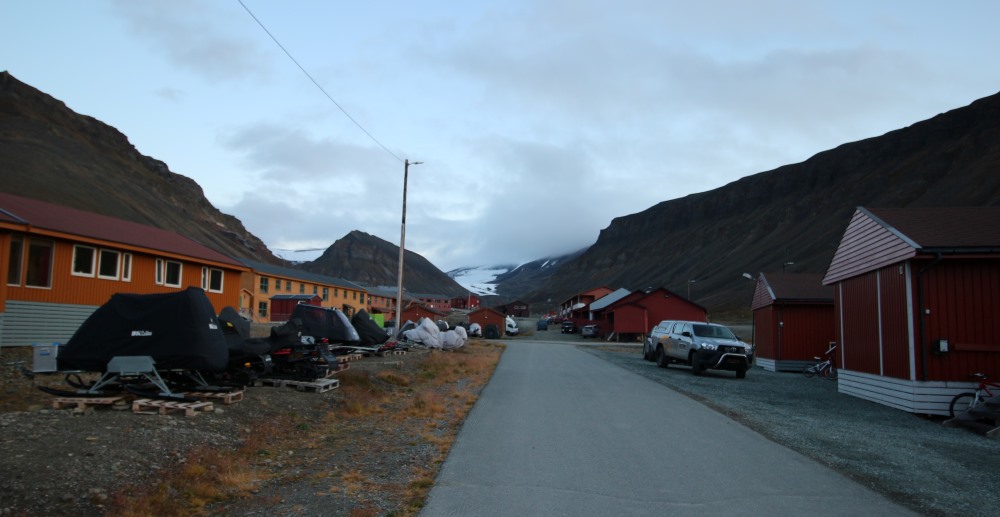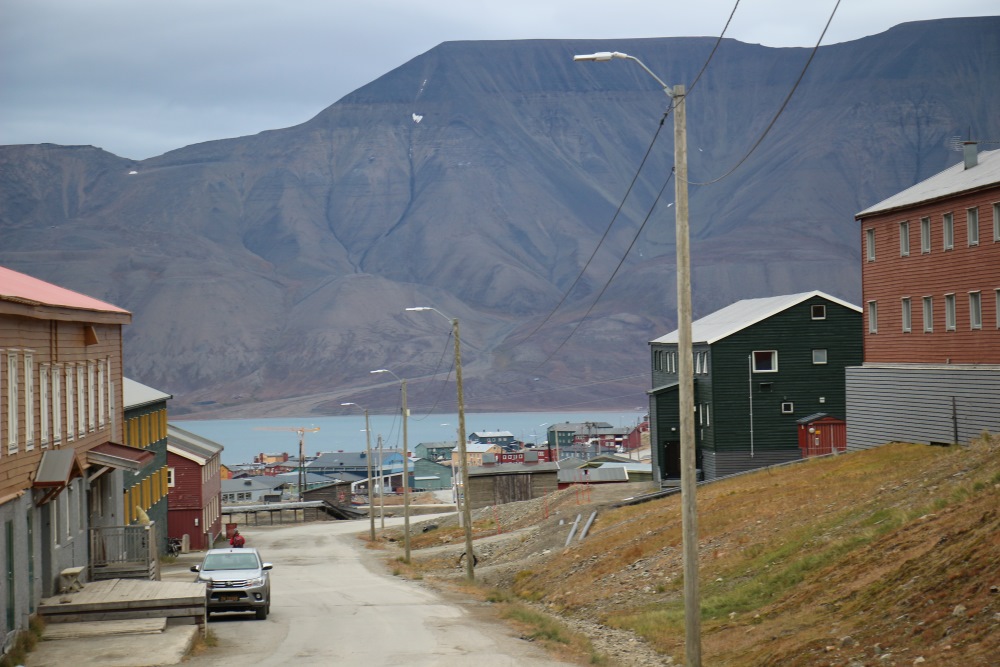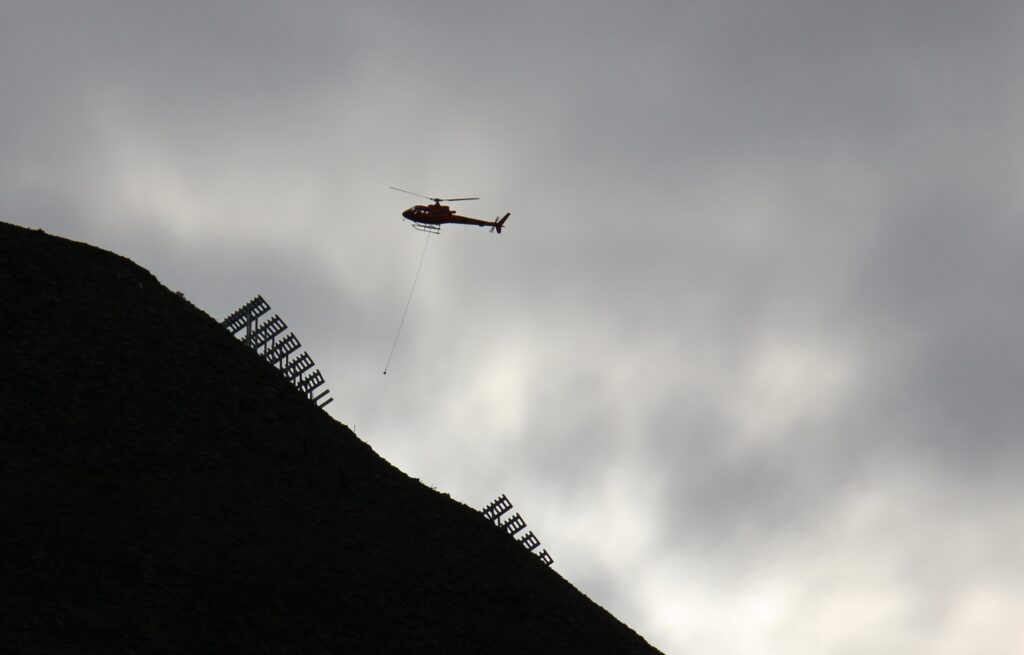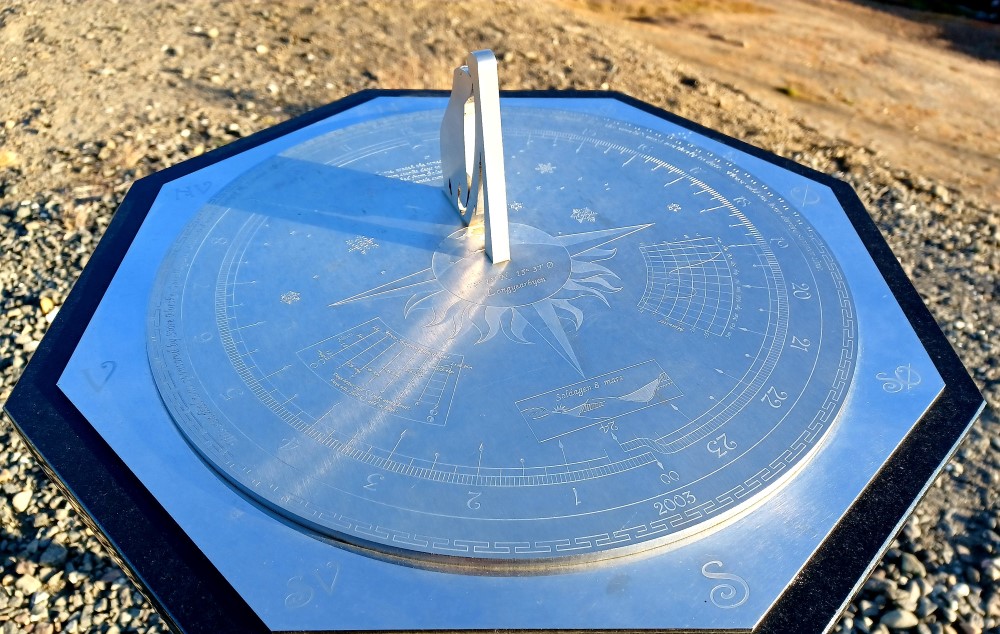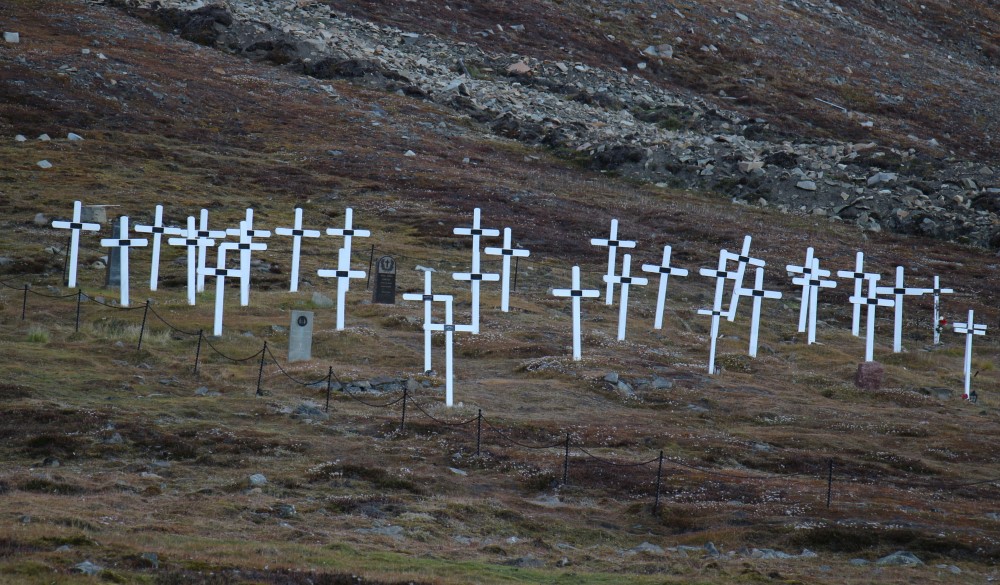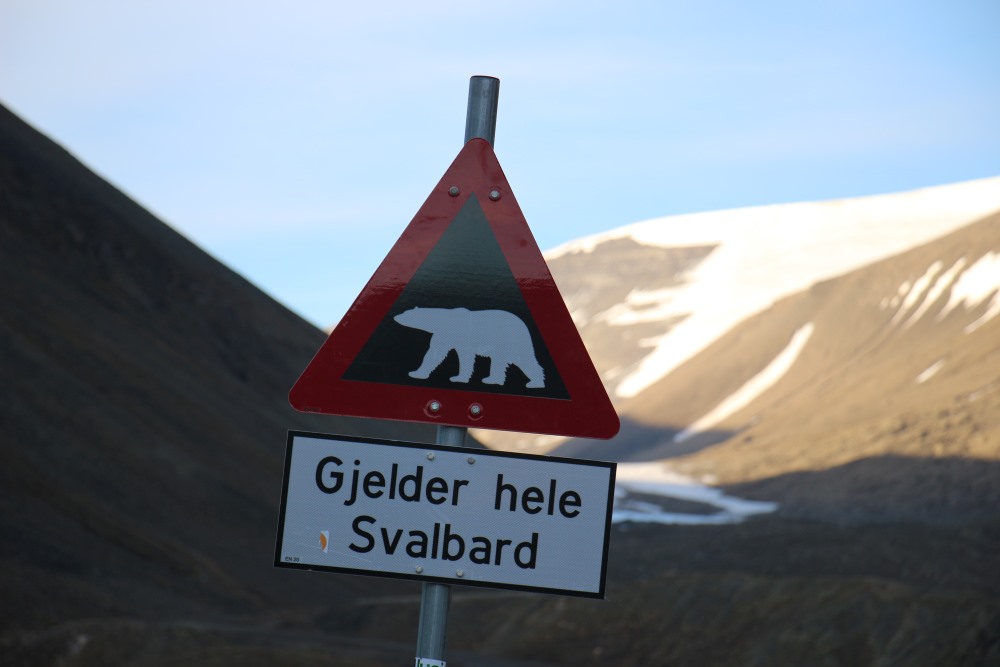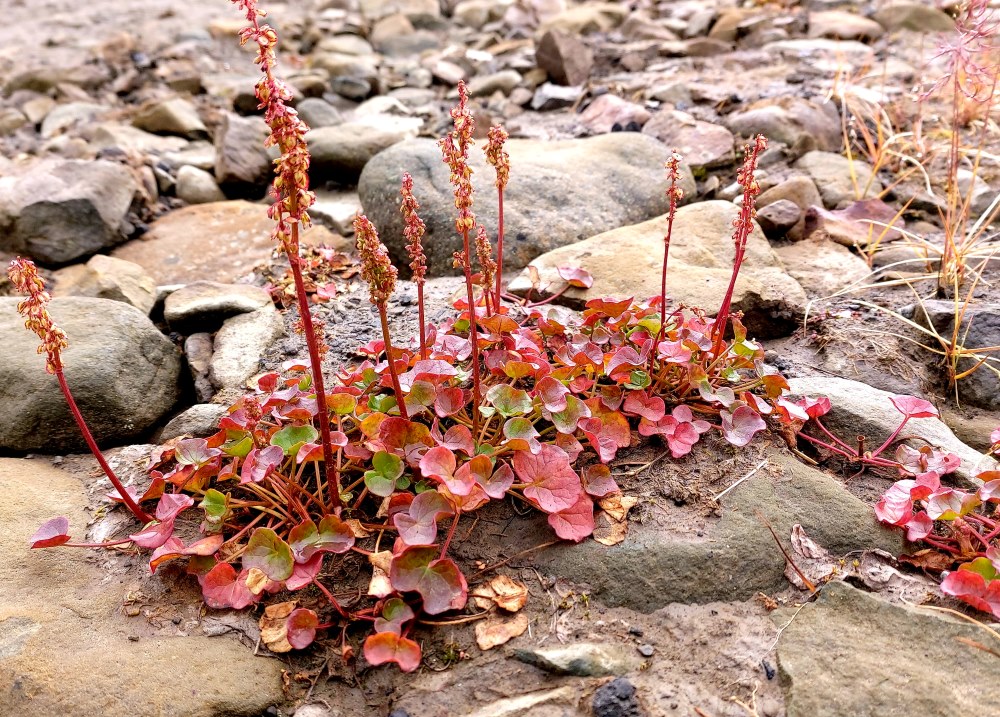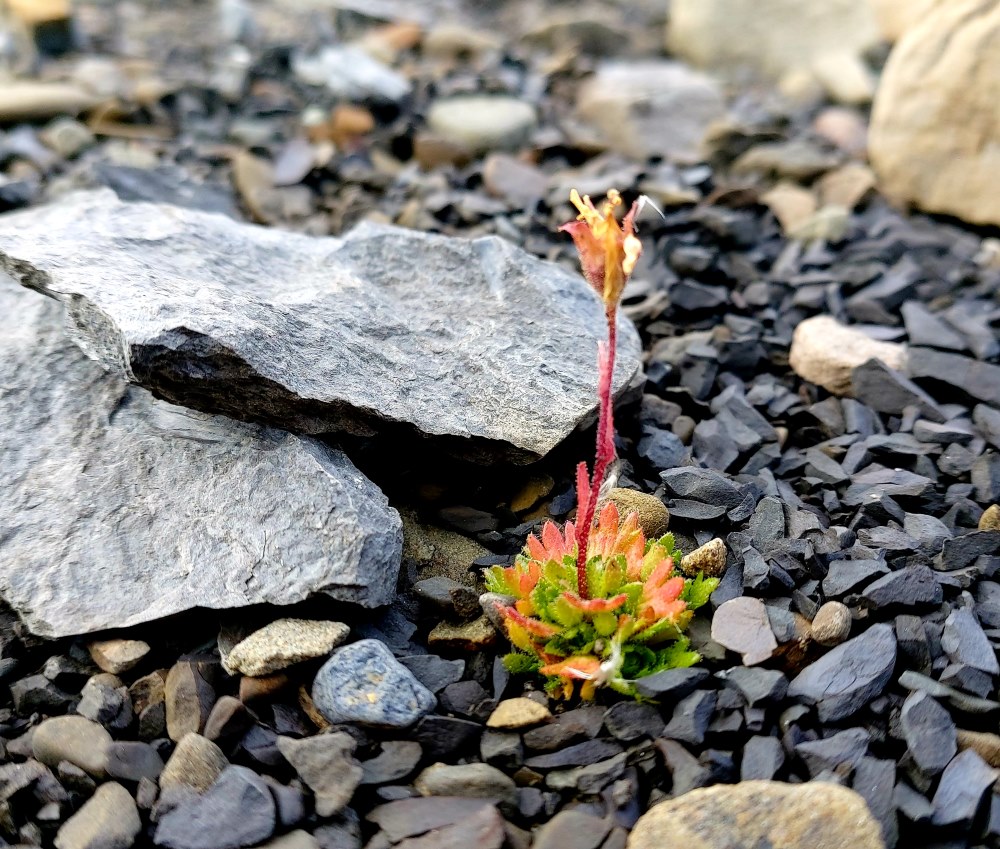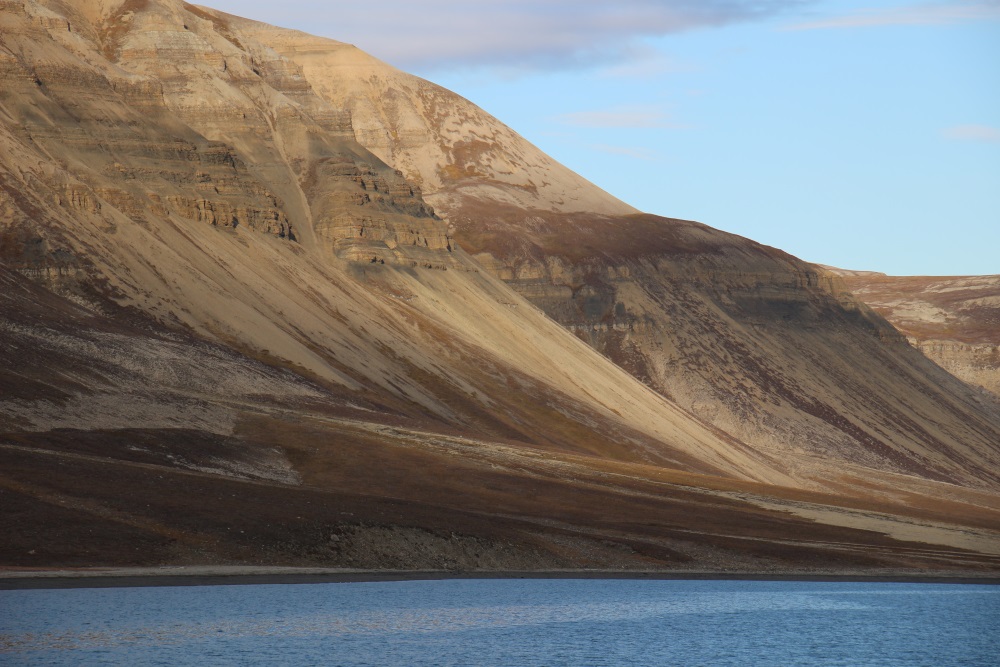Longyearbyen

Longyearbyen
The northernmost human settlement one would ever visit requires us to fly first, and then, to be able to see its wonders, we need to either hike around, sail on the boats, walk using crampons and climb, as the roads are non-existent outside the city. Sounds like a place to be, by all means.
I came to Longyearbyen (LYB) to take a tiny peek at the arctic nature, see some animals previously seen only in documentaries and literally cool myself down after a long and intense period of being deep fried. I ended up falling in love with this speck of anthropogenic dust spread between two mountains by the fjord in which whales, belugas and walruses are regulars, knowing instantly that this won’t be the last time I am here.
LYB lies a little bit over 1 000 km away from the North pole, on one of the islands which are home to 2 100 glaciers, 2 300 humans, 3 000 polar bears and 1 000 sled dogs. The city is the world’s northernmost human settlement with a permanent population.
I landed the first time in this arctic heaven on the last day of midnight sun in 2020, which means that it was the last night without darkness during the nighttime. The night after had 40 minutes of darkness and the amount of it rose each night, until 25th of october, when the polar night began (the Sun does not rise at all).
The city is very casual and comfortable, especially knowing how challenging it is to be here. I walked by foot along the entire city several times, within the safe zone and truly enjoyed it.
The city is full of people in some sort of action. All the time something is happening, and there is so much to see, especially for us born in the south. The entire city is built around coal mining business and there are related structures around it, including mines, which are left to deteriorate by themselves with the assistance of time.
The church
First time I was in LYB it was forbidden to enter the world’s northernmost church because of covid in full swing. I was really disappointed as I wanted to take a peek inside; the churches outside central Europe – meaning – moving away from dense urban areas and towards the wilderness – tend to have the outside environment integrated in design. This one has paintings of aurora borealis on the walls.
The church belongs to the Church of Norway, of Lutheran denomination, it is stern, ascetic and austere on the outside as they all are, but calm and peaceful, fitting perfectly into this tiny settlement.
This time I had the opportunity to enter it. First, you need to remove your shoes; this is a part of the miners tradition, you really don’t want to bring coal dust in a house. The interior is unusually cozy (Norwegians would say “koselig”), you are invited to take a seat, have a warm beverage and obviously have a nice moment for yourself.
School & barnehage
The world’s northernmost school and the world’s northernmost kindergarten lie in a valley between towering mountains in a wide open environment. Imagine being raised here and going to a school at such unusual place.
Sundial
The idea behind a sundial makes it in general pretty nifty to say the least, but a sundial in the High Arctic is a whole other ballgame (plot twist: polar nights with 24 h of darkness and the rest of the year when there is no darkness at all).
Last one standing
The city of Longyearbyen was attacked by the Axis powers on september the 8th in 1943. and during an eight hour long attack in the operation Zitronella the whole settlement was razed to the ground. The only building – a shed – which survived the bombings was this one. The local government is extremely keen on keeping every possible building or object intact, as a memorabilia of past times, so it is not going anywhere. I love this way of thinking so much.
Frøhvelv / the seed vault
Major POI of this visit was coming to the Global seed vault (Svalbard globale frøhvelv), which has often been called by the media as “the Doomsday vault” since it began operating in 2008. I have been actively following news and updates about this place since it opened so it was very interesting for me to see it in person.
The Vault’s true value is completely inaccessible to a visitor. We can only see the entrance, decorated with plates which reflect aurora borealis during polar nights, as the facility is carved 100 m deep into the sandstone mountain over Longyearbyen. The purpose of this unusual facility is to provide a “shelter” for crop seed material, free of charge. The countries who choose to participate in keeping their often autochthonic seed material safe send the samples to the Vault, where they are being carefully packed in four-layered foil and placed in sealed boxes. These samples serve as duplicates (as backups; Jesus saves – you should too) of seed samples which are being kept in national gene banks in each of the countries, and only those gene banks can deposit/request a withdrawal from the Vault. Upon request the Vault is obligated to send the samples back to the original country. This proves to be very useful in cases of local wars, wildfires, pest invasions and other similar calamities. Some of the countries have already requested the withdrawal of their seed samples with intention to re-plant them (f ex Syria).
Why is Platåfjellet mountain over Longyearbyen chosen as a place for a building of this type of purpose?
– the area of Spitsbergen has low tectonic activity which means that there is a low chance of being struck by an earthquake
– the surrounding sandstone has low radiation levels
– permafrost layer of soil (100 m thick) acts as a natural freezer, keeping the temperatures sub zero at low cost
– it was calculated that even if every cubic meter of snow and ice on Earth (including both polar ice caps, which is a tremendous amount of ice) would thaw and increase the sea levels this mountain and this exact place on which the vault was built would stay safe from floods
– even though it is remote, Longyearbyen is a place accessible during the whole year by regular commercial flights, and it is only a couple of hours away from the Norwegian capital city.
At this moment, there are over 4 000 plant species in it, mostly food crops such as rice, beans and wheat. It is possible to store 4.5 millions of seed samples in the Vault. There are 500 seeds per sample, which means that 2.25 billions of seeds can be stored in this facility.
EISCAT
EISCAT is a geophysical facility equipped with two parabolic dishes which collect data and observe interactions between the Sun and the Earth’s ionosphere – they gather the aurora borealis related data and provide the basis for understanding its behavior. Besides that, the dishes track the space debris (defunct/decommissioned man made space exploration trash, orbiting around the Earth and posing threats to operating space machinery) on the altitudes up to 1 500 km and they are – prepare to smash your jaws on the floor – able to distinguish the pieces which are only 20 mm long.
Being born and buried
On Svalbard you cannot be born and buried. Every person who ever resided in it came from another country (Svalbard has no native population), and pregnant ladies fly to Tromsø to hospital to prepare for birth a couple of weeks before the due date. Local hospital is unequipped to deal with labor.
You can often see “it’s forbidden to die in Svalbard” in Longyearbyen-related articles. This, of c, is a ridiculous lie as no one can “forbid” you to die anywhere. But, because of the thick permafrost layer, you cannot be buried here, as your body cannot decompose in the ground. There are a few dozens of graves though, right under the Platåfjellet mountain, and in which lie the patients who died of Spanish flu buried in 1918. You can assume, they have changed very little since then.
“Gjelder hele Svalbard”
Traffic signs in their own special way describe where you are. There are 4 of those who remind you of the polar bears danger in LYB and they are spread on the edges of the so-called Pink zone – one is in Nybyen, and another ones in Adventdalen, Sverdrupbyen and near the airport.
It is forbidden to leave Longyearbyen’s Pink zone without a high caliber rifle and a person capable of using it in an efficient manner. To shoot a polar bear (for fun, hunt or whatever) is, expectedly, strictly forbidden and punishable by law, but in self defense it is, well, advisable. I am very aware that I am not a skilled person when it comes to shooting the Earth’s largest land predator – exceptionally strong target 2,5 m long and with 700 kg of weight running towards me, so I have no intention to carry a gun during these days in Svalbard. If I meet a polar bear, I am dead anyway.
The advice on how to deal with a bear running towards you goes something like this: “If it is brown – lay down, if it is black – fight back, if it is white – good night.” ![]()
Plants
I truly enjoy traveling and I live for new experiences, unknown places, unusual customs and people with whom I have nothing in common. After years of visiting museums and adoring architecture I turned myself completely to the only true artist – Mother Nature. I particularly love to immerse myself into true wilderness, vast spaces with low human density/activity and high exposure to the elements.
Less than 10% of the Svalbard’s landmass has any vegetation. Much of the islands are covered with rock and ice, making it nearly impossible for vegetation to grow. However, nearly impossible is not the same as impossible. The flora of Svalbard is surprisingly diverse, albeit in small areas.
The plants are tiny, match sized, truly beautiful and often very intricate; they all tend to either spread themselves on the soil or grow reluctantly. They also remind us of tenacity and resilience in adverse conditions, such as growing on the slopes of the mountains on which the snow and ice glide and destroy everything on their path, exposed to sub zeroes and harsh winds. Not to mention that they are rooted on the surface of permafrost.
Desert cuddled by the Gulf stream
Svalbard is classified as an arctic desert. Not what you’d expect, right? The catch lies in the amount of precipitation, which is minimal, and humidity – the air is almost as dry as the one in a “regular” desert. And even though Svalbard is located further north than most northerly human settlements in Greenland, daily temperatures throughout the year are significantly lower than you’d expect, thanks to the Gulf stream (sea current which carries tropical warm waters towards the north pole). Without the Gulf stream Svalbard would be permanently locked in ice.
The highest temperature measured in LYB was 23°C (july 2020). The lowest one was -43°C (march 1986). I never experienced temps lower than -32 and cannot even imagine how that feels, but would truly love to experience that.
Locals
Now, a little about the locals, so you can have an idea how they perceive their home away from home. Almost every person I have been speaking to is unbelievably chatty, extroverted and resourceful when it comes to talking about living in LYB. This does make sense, as many of them are a part of tourist experiences and it is kinda expected to be able to engage easily in conversations. There are approx 2 500 people living there, hailing from over 60 countries, and the mixture of nationalities, upbringings and personalities basically boils down to one single common denominator – being able to love a quite extreme environment, only 1 300 km away from the North Pole.
All of them are happy to be there. Most of them, though, are aware that they won’t stay there until the end of their lives, and I sense some type of pre-nostalgia in their voices.
They say that the period of darkness is not easy to handle, and the crucial part of the strategy of not going insane is meeting other people on a regular basis. They tend to “pull out” those who are occasionally stuck in their apartments, as many of them understand what is going on there. Also, they point out that they need to go out even in the coldest period for hikes, as they see the effect of being “trapped” in their own rooms, and no one likes the consequences of that.
The funniest thing related to messed up circadian rhythms is the story of people coming to work at 8 PM instead of 8 AM. Apparently, it is very easy to lose the sense of daily rhythm when it’s dark outside for weeks. I am super curious how I would be able to function there during a 365 days long stay.
Every one of those people has a profound respect for nature, and adores being outside (d-uh!). When they return to either their hometowns or go on vacations in urban areas, they mention the feeling of being claustrophobic. Suddenly, the rooms are tight, the streets are narrow and the skyscrapers look intimidating. This is something that each person who visited Svalbard is able to understand easily – there is a wide open space wherever you look, a very harsh and true wilderness is right outside your doorstep and human structures of LYB are just a “speck” of dust in that humongous mountainous area.
Shopping
In a sharp contrast to this barren and seemingly lifeless nature are the local shops. The city of Longyearbyen is not a godforsaken frozen hellhole in the middle of nowhere, in which you can, if you are lucky, eat raw whale blubber by the open fire. Oh no. This city is a stop on a regular cruise route, and there are gourmet restaurants, wine cellars, and the shops offer fine designer jewelry, quality sports clothing et cetera.
Safety
Here is a small reminder on how to behave in Longyearbyen and Svalbard in general.
From what I have heard this needs to be repeated without mercy:
- do not leave the Pink zone (safe zone, check the Longyearbyen’s map) without a rifle and/or a person who carries it and knows how to use it
- be aware of a danger of sleeping outside in a tent. I adore doing that, especially in colder regions, but I personally would not do it here. A Dutch guy was killed by a polar bear while I was visiting LYB. I cannot imagine a more horrible way to die
- leave nothing behind you – do not throw away the litter on the streets, while hiking in the mountains or glaciers, and while on a boat ride. It is reckless and has a long term effect on already fragile local nature. Think like this – no one will walk after you to pick it up, and the time needed for litter to degrade in the Arctic is basically infinite
- never, ever, ever pick plants and flowers (unless you are a botanist and have a research permit to do so, of course) and avoid walking/stepping on it if you can. Arctic flora is slow growing, regenerates at a particularly slow pace and already has an enormous task of dealing with harsh nature. It does not need you to be an extra source of damage. Take care of diversity – instead of picking a flower – take a picture of it
- be respectful towards local animals, both domesticated and wild ones. Do not provoke, abuse or irritate them in any way. It is not recommended to joyfully run towards a dog (especially sled dogs) and cuddle them. They are not your usual lapdog puppies and they can reward you with a bite if they feel annoyed by your presence. Always ask the guide if you can approach the dogs before you do it.
Be respectful no matter what.
When to go to Svalbard?
Depends on what you want to see.
Wanna see the northern lights? Aim at the period with maximum darkness, so you’re able to see it. Svalbard has a minimum amount of light pollution and I cannot imagine a more appropriate place to observe the light dancing in the skies.
Wanna see nature in its full splendor? Aim at the period with full light. There is so much to do here, and I barely scratched the surface.
There is also a third season called blåtid/blue hour which looks like late evening, and my next visit will probably be in this period.


